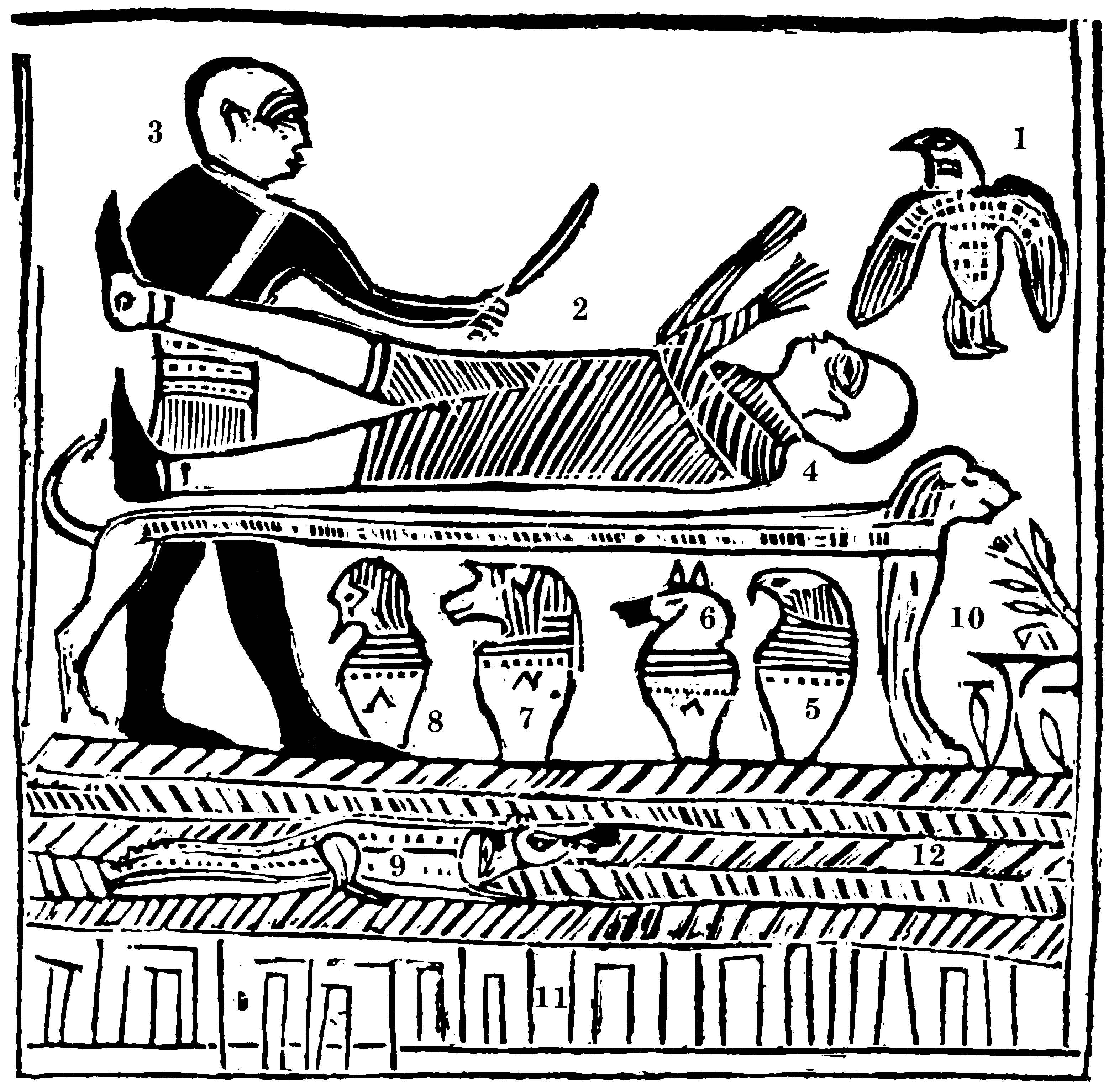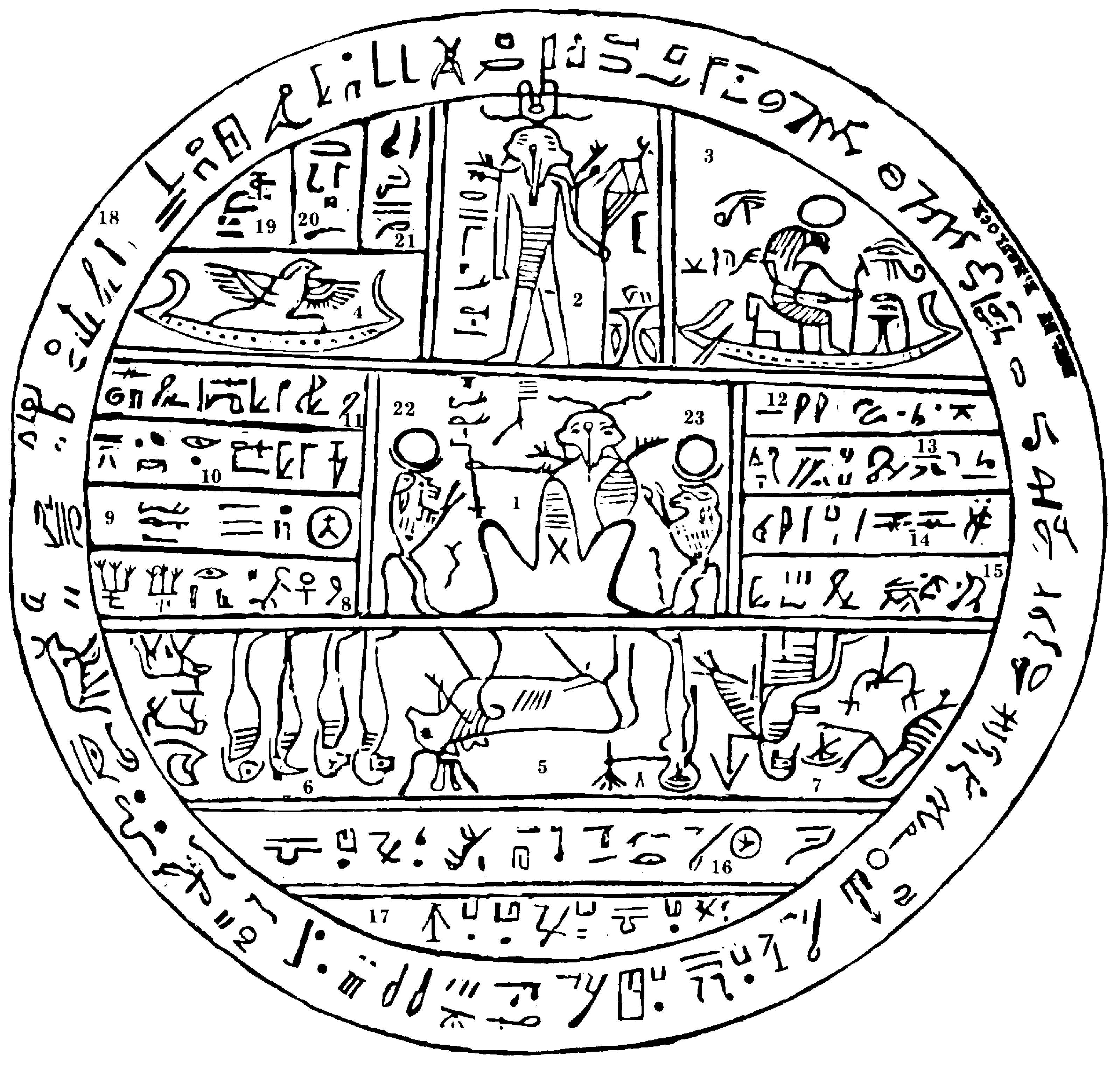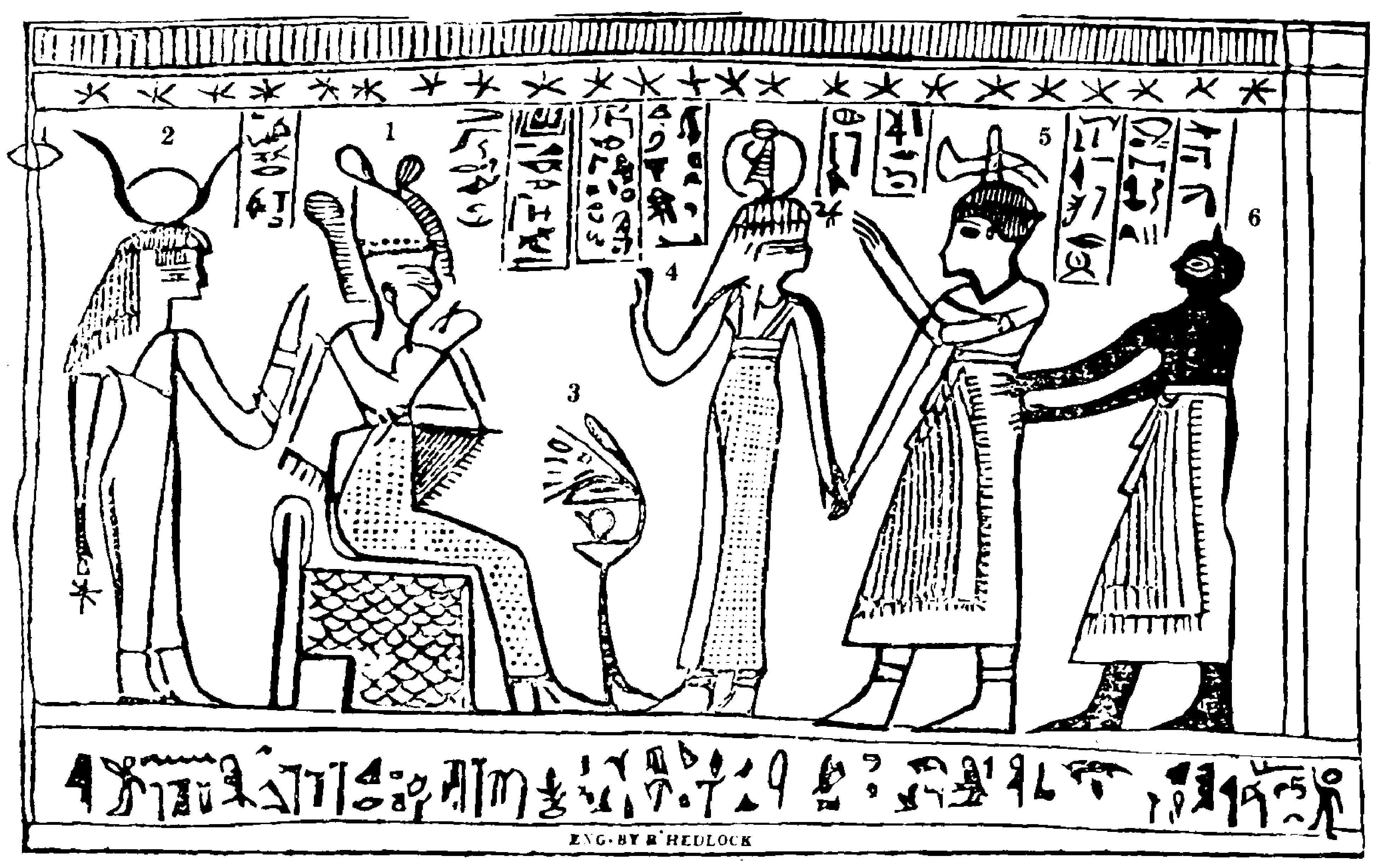- Teachings and Commandments
- Sections
- Abraham
-
Facsimile 1
THE BOOK OF ABRAHAM
Section 145
Translated through Joseph Smith primarily in November 1835, and published in the Times and Seasons 1 March – 16 May 1842. [See RE Genesis 7:4 for the historical placement of this record.]
NO. 1

EXPLANATION OF THE ABOVE CUT
Fig. 1. The angel of the Lord.
2. Abraham, fastened upon an altar.
3. The idolatrous priest of Elkkener attempting to offer up Abraham as a sacrifice.
4.
-
Chapter 1
In the land of the Chaldeans, at the residence of my father, I, Abraham, saw that it was needful for me to obtain another place of residence. And finding there was greater happiness, and peace, and rest for me, I sought for the blessings of the Fathers and the right whereunto I should be ordained to administer the same. Having been myself a follower of righteousness, desiring also to be one who...
-
Chapter 2
Behold, Potipher’s Hill was in the land of Ur of Chaldea, and the Lord broke down the altar of Elkkener, and of the gods of the land, and utterly destroyed them, and smote the priest that he died. And there was great mourning in Chaldea, and also in the court of Pharaoh, which Pharaoh signifies king by royal blood.
Now this king of Egypt was a descendant from the loins of Ham and was a partaker of...
-
Chapter 3
But I, Abram, and Lot, my brother’s son, prayed unto the Lord, and the Lord appeared unto me and said unto me, Arise and take Lot with you, for I have purposed to take you away out of Haran, and to make of you a minister to bear my name in a strange land which I will give unto your seed after you for an everlasting possession, when they hearken to my voice, for I am the Lord, your God. I dwell in...
-
Chapter 4
So I, Abram, departed as the Lord had said unto me, and Lot with me. And I, Abram, was sixty and two years old when I departed out of Haran. And I took Sarai, whom I took to wife when I was in Ur, in Chaldea, and Lot, my brother’s son, and all our substance that we had gathered, and the souls that we had won in Haran, and came forth in the way to the land of Canaan, and dwelt in tents as we came...
-
Chapter 5
And I, Abraham, had the Urim and Thummim which the Lord, my God, had given unto me in Ur of the Chaldees. And I saw the stars also, that they were very great, and that one of them was nearest unto the throne of God. And there were many great ones which were near unto it. And the Lord said unto me, These are the governing ones, and the name of the great one is Kolob because it is near unto me, for...
-
Chapter 6
Now the Lord had shown unto me, Abraham, the intelligences that were organized before the world was, and among all these there were many of the noble and great ones. And God saw these souls, that they were good, and he stood in the midst of them and he said, These I will make my rulers. For he stood among those that were spirits, and he saw that they were good. And he said unto me, Abraham, you...
-
Chapter 7
And then the Lord said, Let us go down. And they went down at the beginning and they organized and formed (that is, the Gods) the heavens and the earth. And the earth, after it was formed, was empty and desolate because they had not formed anything but the earth. And darkness reigned upon the face of the deep, and the spirit of the Gods was brooding upon the faces of the water.
And they said (the...
-
Facsimile 2
NO. 2

EXPLANATION OF THE ABOVE CUT
Fig. 1. Kolob, signifying the first creation, nearest to the celestial or the residence of God. First in government, the last pertaining to the measurement of time — the measurement according to the celestial time, which celestial time signifies one day to a cubit. One day in Kolob is equal to a thousand years according to the measurement of this earth, which is...
-
Facsimile 3
NO. 3

EXPLANATION OF THE ABOVE CUT
Fig. 1. Abraham sitting upon Pharaoh’s throne, by the politeness of the king, with a crown upon his head representing the Priesthood, as emblematical of the grand presidency in Heaven with the scepter of justice and judgment in his hand.
Fig. 2. King Pharaoh, whose name is given in the characters above his head.
Fig. 3. Signifies Abraham in Egypt, referring to...
